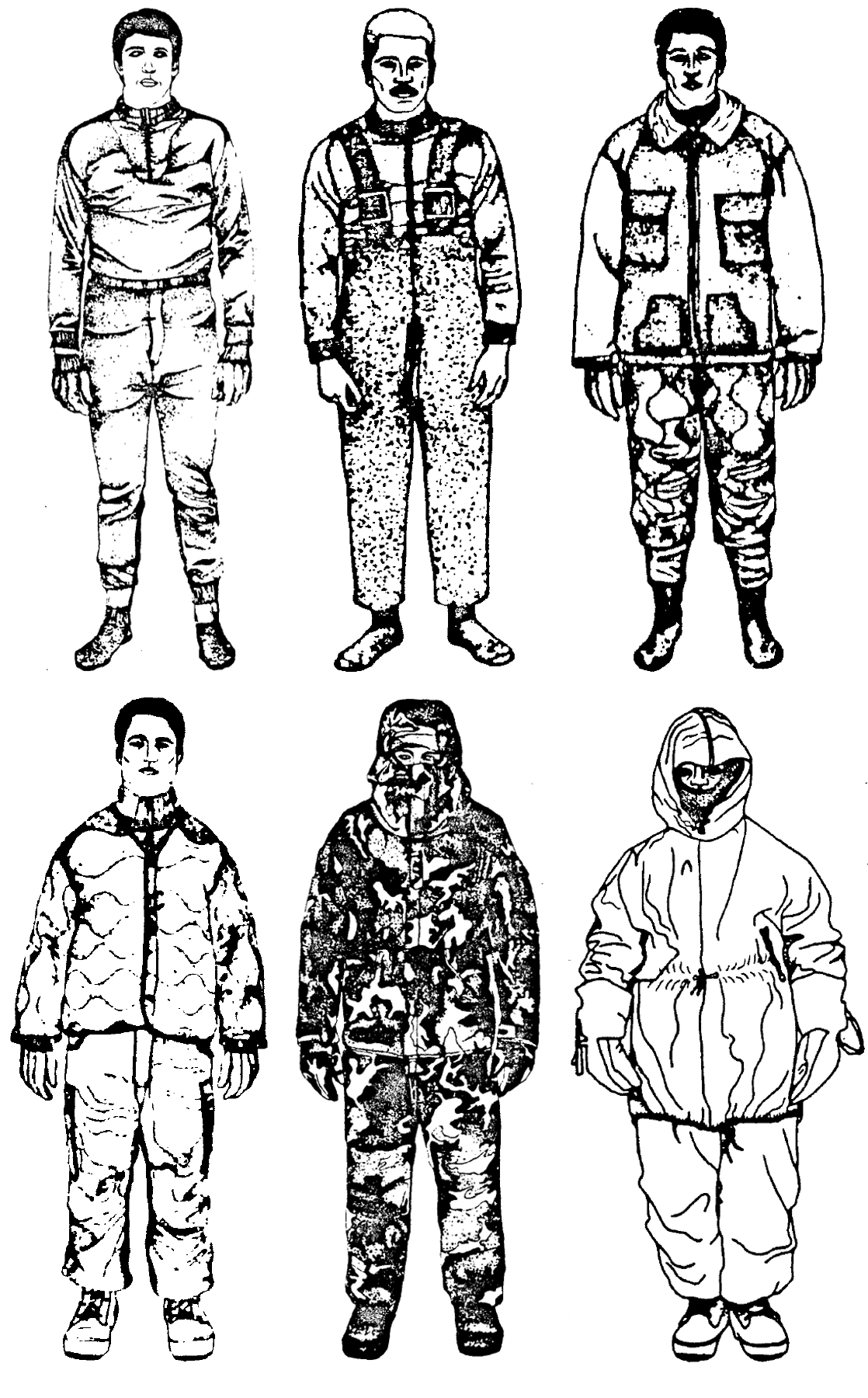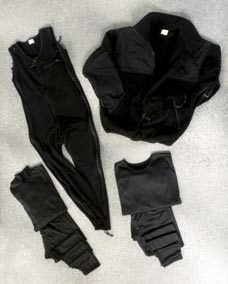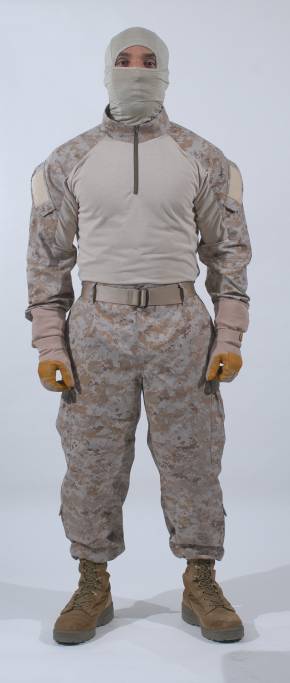Cold Temperature and Artic Protective System (CTAPS) is a soldier head to toe clothing ensemble with -65 to +45°F environmental protection.

The Extended Cold Weather Clothing System (ECWCS) is a layered insulating system adjustable to personal preference, metabolism, and prevailing weather conditions.It is designed to maintain adequate environmental protection between +40°F and -60°F (4°C and -51°C).

The Lightweight Environmental Protection (LEP) is an insulation subsystem developed under the Special Operations Forces Personal Equipment Advanced Requirements (SPEAR).The system is designed to be individually configured based upon mission, terrain and climate requirements as well as personal preference.

The Mountain/Cold Weather Clothing System (MCWCS) is a Marine Corps specific cold weather layering system (CWLS), a replacement for the ECWCS.

The Protective Combat Uniform (PCU) is an interchangeable 15-piece, 7-level ensemble (the original block 0 configuration) that can be worn in layers appropriate for the mission.The PCU replaces the LEP.
Wear guidance for cold weather clothing fielded by the Program Manager, Infantry Combat Equipment, Marine Corps Systems Command (PM ICE, MARCORSYSCOM).

The Generation III Extended Cold Weather Clothing System (GEN III ECWCS) was designed to be functional in multiple cold weather climates and activities.It consists of a versatile, multi-layered insulating system that allows the Soldier to adapt to varying mission requirements and environmental conditions.

The combination Cold-Wet/Cold-Dry Clothing System (M-1951) can be configured into two ensembles. The cold-wet ensemble is worn above 14°F, and the cold-dry ensemble is worn below 14°F. The cold-dry ensemble protects down to -60°F. The cold-wet configuration differs from the cold-dry in the number of layers and the choice of boots. The system uses layers of wool/cotton fabrics to trap air for insulation, and a water-repellent outer garment to maintain dryness.

The combination Cold-Wet/Cold-Dry Clothing System (M-65) can be configured into two ensembles. The cold-wet ensemble is worn above 14°F (-10°C), and the cold-dry ensemble is worn below 14°F. The cold-dry ensemble protects down to -60°F (-51°C). The cold-wet configuration differs from the cold-dry in the number of layers and the choice of boots. The system uses layers of wool/cotton fabrics to trap air for insulation, and a water-repellent outer garment to maintain dryness.

The Fire Resistant Environmental Ensemble (FREE) is a multilayered, versatile, flame resistant system.Its unique individual layers are adaptable into multiple system configurations.This flexibility allows the Soldier greater uniform/personal protection choices.These choices are critical in responding to the current engagement threats while facing extreme climate conditions.

Due to the threat of burn injuries stemming from OIF/OEF, a USON was established that required burn protection for the hands and face/neck. After extensive testing, it was determined that in addition to providing base layer of flame/fire protection, an outer layer of protection is essential.